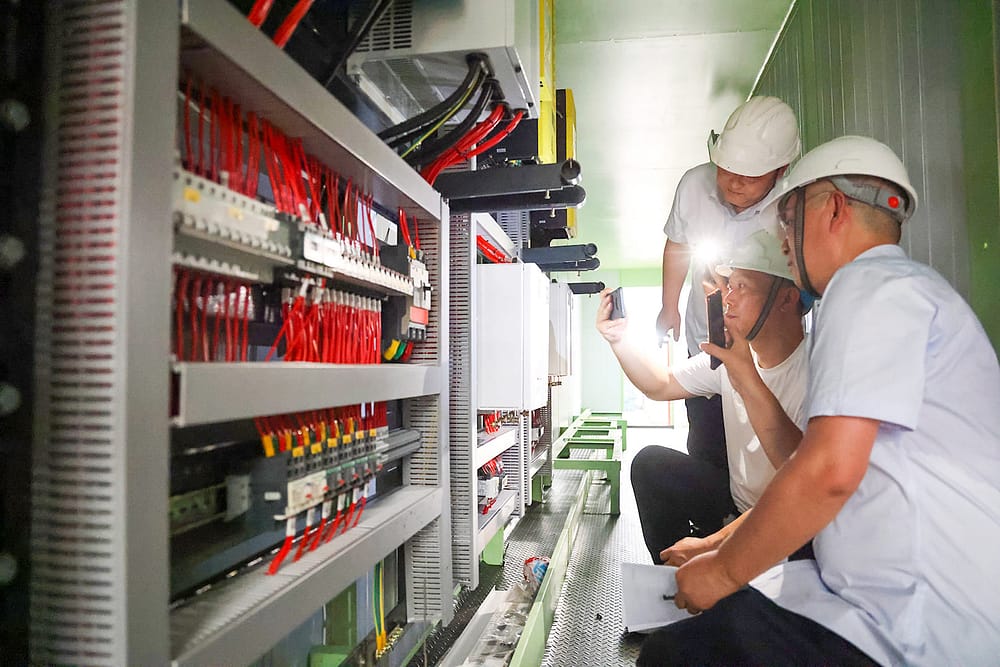Top Tips for Effective Electric System Troubleshooting
Fixing electrical systems calls for a methodical approach, grounded in an extensive understanding of electrical concepts and safety methods. By familiarizing oneself with circuit elements, utilizing crucial devices, and adhering to an organized examination method, experts can effectively determine and deal with issues. The subtleties of reliable troubleshooting prolong past mere technological knowledge; comprehending exactly how to record searchings for and prioritize security can substantially affect outcomes. As we check out these essential elements even more, it ends up being clear that understanding this procedure is not simply advantageous but vital for success in the area.
Understand the Essentials
Recognizing the essentials of electrical systems is essential for effective troubleshooting, as a strong structure allows service technicians to identify and fix problems much more efficiently. An extensive grasp of electric concepts, such as voltage, current, resistance, and power, is crucial in identifying the origin of problems. Voltage is the electrical prospective difference that drives current via a circuit, while resistance opposes the circulation of present, impacting the total capability of the system.
Knowledge with circuit elements, including resistors, capacitors, diodes, and changes, is also paramount. Each part plays a distinct function in circuit behavior and can impact efficiency when malfunctioning. Additionally, comprehending collection and parallel circuit arrangements is vital, as these plans affect the distribution of voltage and existing within the system.
In addition, knowledge of security protocols is vital. Specialists have to know possible risks, such as shock and short circuits, to apply safe troubleshooting methods. By understanding these foundational ideas, professionals enhance their capability to perform reliable diagnostics and repairs, eventually causing improved performance and integrity of electric systems. This foundational knowledge is the foundation of successful troubleshooting undertakings.
Gather Necessary Tools
Efficient troubleshooting of electric systems calls for the appropriate collection of devices to identify and resolve issues precisely. A well-equipped professional can significantly enhance performance and performance in identifying troubles. Crucial tools consist of a multimeter, which gauges voltage, current, and resistance, permitting exact examinations of electrical components. Secure meters are likewise important for determining present without disconnecting the circuit, ensuring safety and security and comfort.
Furthermore, insulated hand devices such as screwdrivers, pliers, and cable strippers are critical for safely adjusting electric connections. It is likewise advisable to have a circuit tester accessible to confirm the visibility of voltage in electrical outlets and cables. For even more complicated systems, a thermal imaging camera can aid spot overheating parts, indicating possible failures.

Comply With an Organized Technique
Having actually collected the suitable tools, the next step in fixing electrical systems is to follow a systematic page method. A methodical technique guarantees that specialists can determine mistakes successfully and properly, lessening downtime and stopping unneeded repair services.
Begin by reviewing the system's schematic layouts and specs. This includes monitoring each element methodically, beginning from the power source and functioning towards the load.
Make use of testing tools, such as multimeters and oscilloscopes, to gather unbiased data regarding voltage, current, and resistance at numerous points within the system. This empirical proof will assist your troubleshooting efforts and help to verify or eliminate possible root causes of failure.
In addition, consider ecological aspects that investigate this site may affect the system's performance, such as temperature level fluctuations or wetness access. A thorough assessment of wiring, links, and components will ensure that all opportunities are accounted for.
Document Your Searchings For
Comprehensive documents is important in the repairing process of electrical systems. Exact documents improve the performance of identifying recurring problems and facilitate communication among group participants. Each finding must be meticulously noted, consisting of symptoms observed, examinations carried out, and the outcomes of those examinations. electrical system troubleshooting. This practice not only aids in recognizing the origin of the trouble but likewise functions as a reference for future fixing initiatives.

Additionally, preserving a log of parts replaced or fixings done is look these up very useful. This info supports supply administration and can help assess the long life and dependability of specific parts.
Eventually, the documentation procedure should be thorough yet succinct, allowing very easy retrieval and review - electrical system troubleshooting. By focusing on comprehensive documents, specialists can create a beneficial data base that not just aids in existing troubleshooting however additionally equips future maintenance initiatives, thus boosting general system integrity

Prioritize Safety And Security Steps
Identifying the fundamental threats connected with electrical systems is crucial for guaranteeing safety and security during troubleshooting. Electric shock, burns, and tools damage are just a few of the possible hazards that service technicians encounter. Focusing on security measures is not just a lawful responsibility however additionally a moral important that safeguards both the professional and the surrounding setting.
Prior to starting any troubleshooting task, service technicians need to don suitable individual safety equipment (PPE), consisting of shielded handwear covers, safety glasses, and flame-resistant clothes. Making sure that the workplace is completely dry and free of clutter can substantially lower the threat of crashes. Furthermore, it is important to de-energize circuits prior to beginning any work, verifying that they are not endure the usage of a multimeter or voltage tester.
Developing clear interaction protocols with staff member is also vital; this ensures that everyone recognizes potential threats and the standing of the electric system being worked on. Having an emergency situation feedback strategy in place can prove very useful in the occasion of a case. By prioritizing precaution, technicians can effectively alleviate dangers and foster a much safer work environment.
Conclusion
Efficient electric system troubleshooting depends on a thorough understanding of fundamental concepts and a methodical approach. Prioritizing security actions guarantees the wellness of people entailed and the integrity of the electric system.